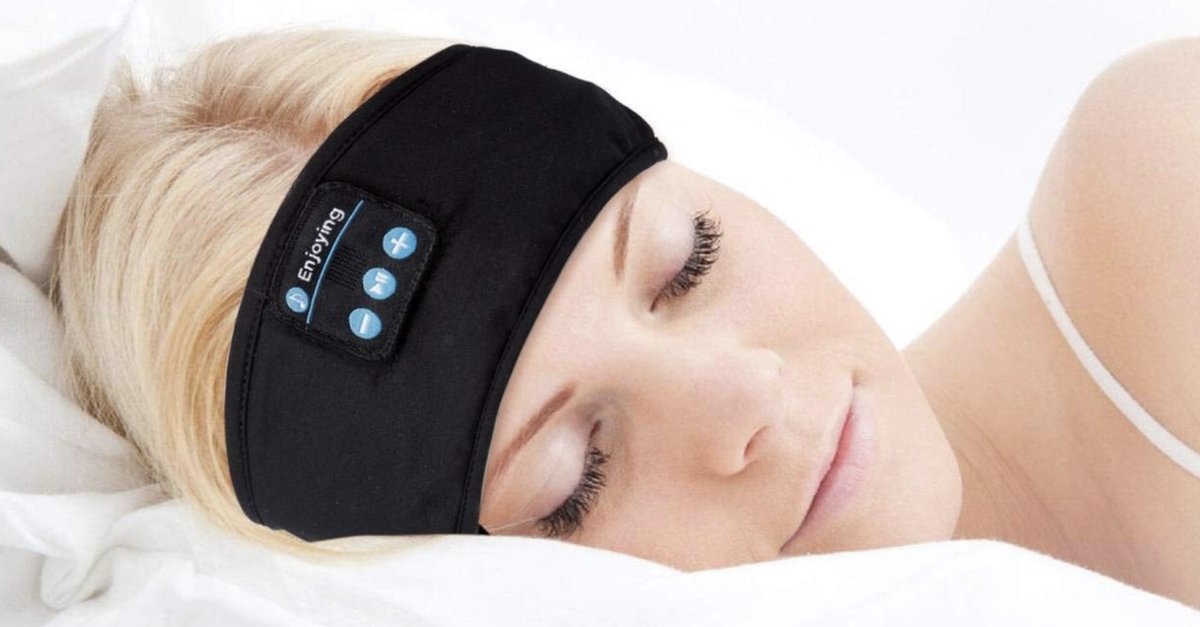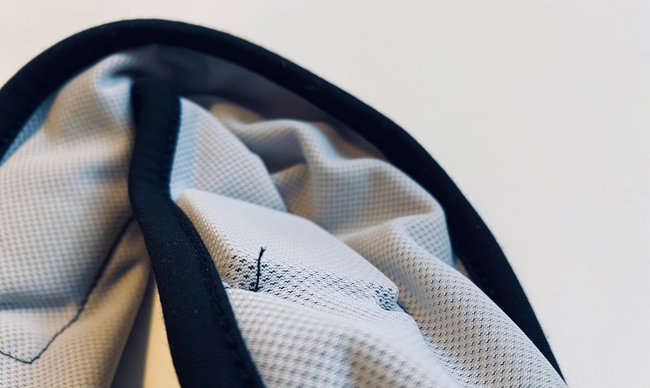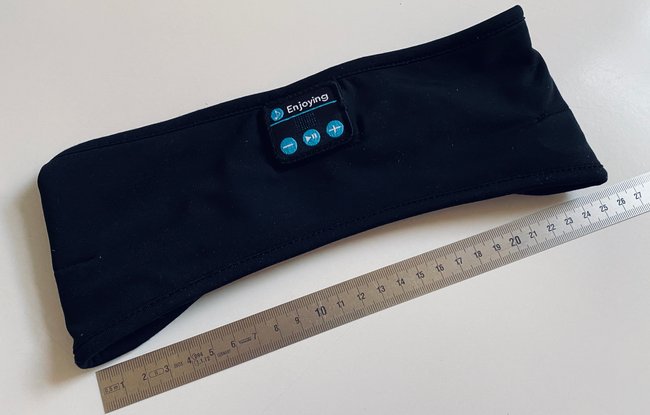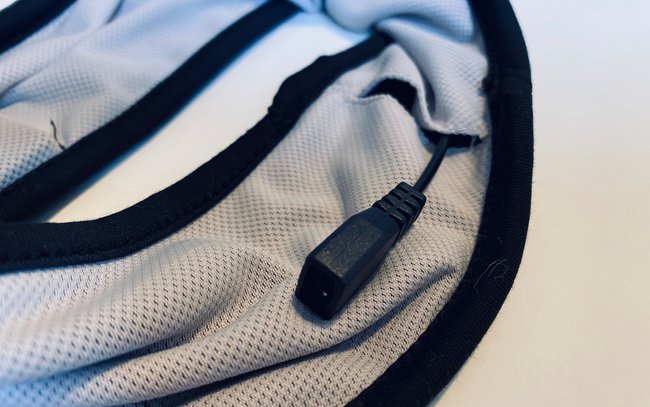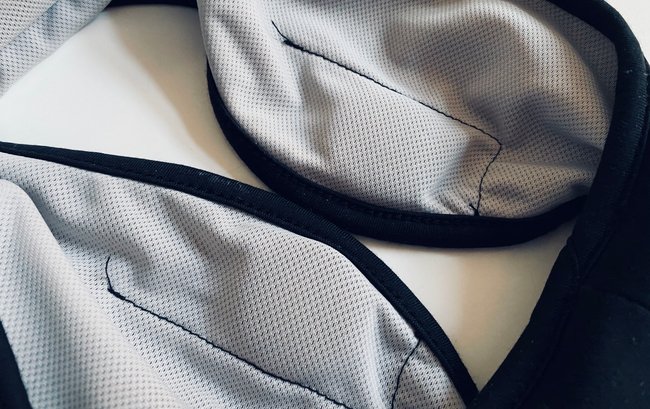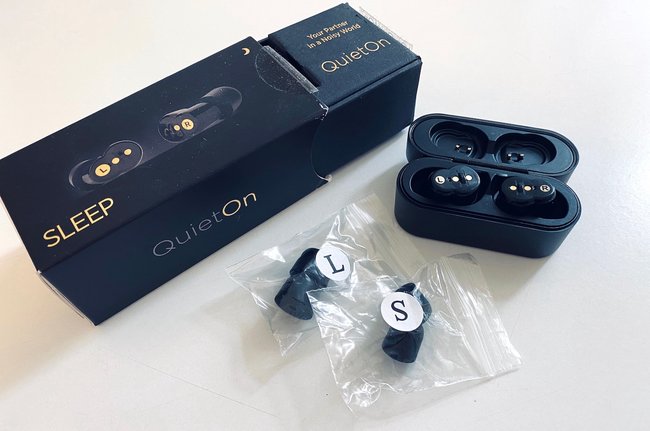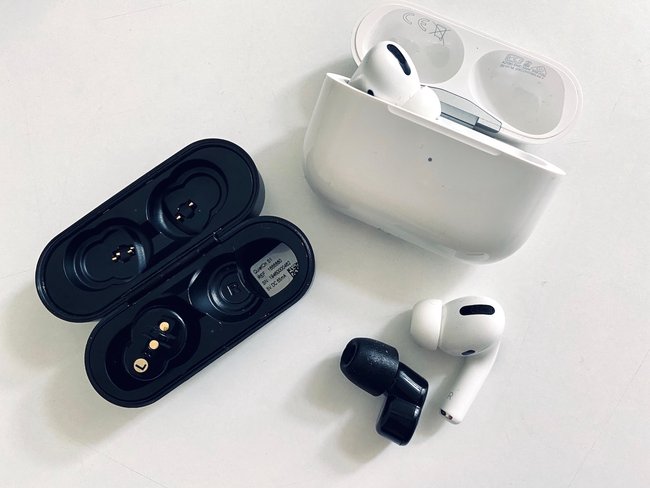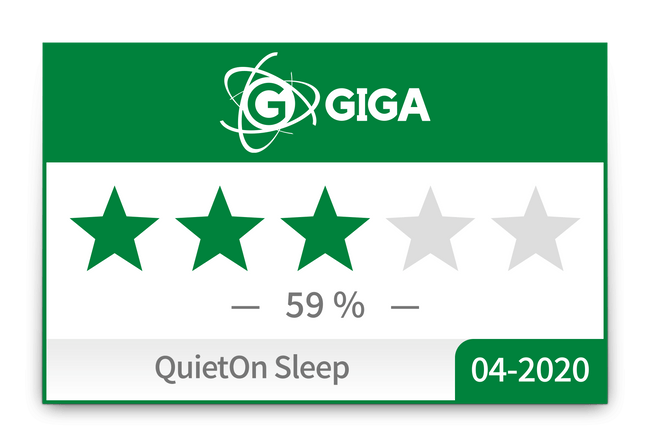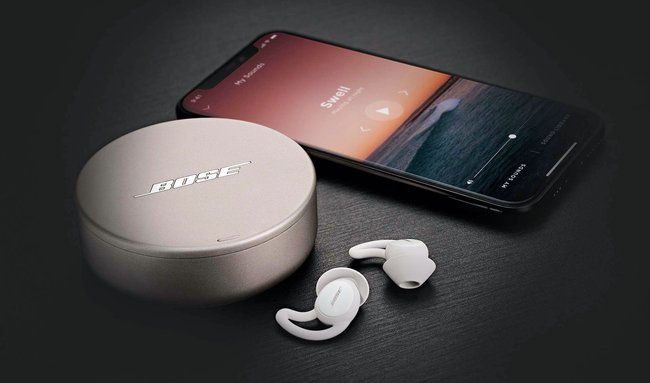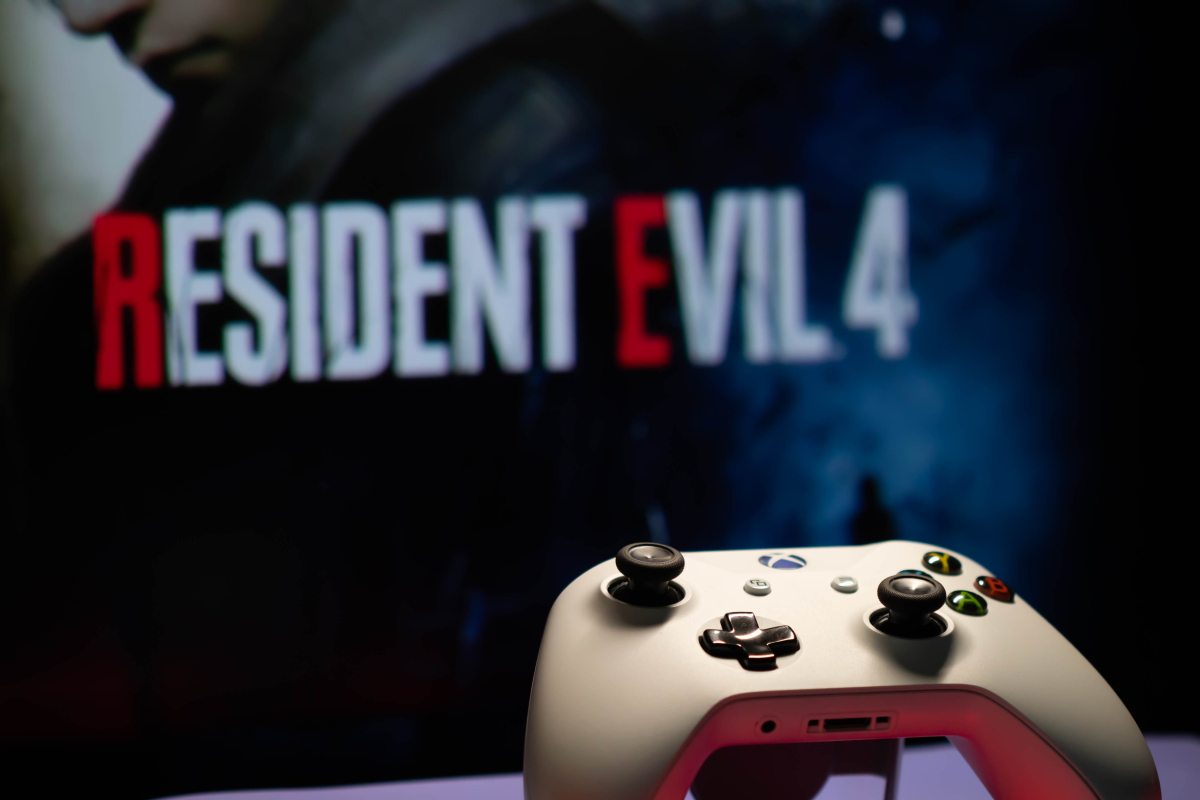Headphones for sleeping in the test
Trouble falling asleep? Relaxing music or a soothing bedtime podcast can help – listen to comfortable sleep headphones that are suitable for bed. Sometimes you just want peace and quiet and need the soundproofing Bose Sleepbuds 2 or a corresponding alternative with noise cancelling. We tried different headphones for sleeping and describe our experiences in comparison.
Headphones for sleeping: what is it and what types are there?
Of course you can wear any “normal” headphone model to fall asleep – but at the latest when you lie on your side on a pillow, conventional headphones become annoying. Over-ear models shift and can break due to the pressure, in-ears pierce the ear canal uncomfortably or get lost. Instead of searching for AirPods between the sheets every night in the dark, it’s better to leave them on the nightstand and get a more suitable solution: headphones for sleeping.
The term “sleep headphones” is not clearly defined and can refer to different designs and purposes. In this purchase advice we differentiate between:
- Wireless bluetooth headphones that play music and, due to their special design, can be worn in bed to sleep.
- Noise-cancelling earbuds (“sleepbuds”), which primarily Block out ambient noise and should ensure peace and better sleep.
A real bestseller is the headband for just under 20 euros at Amazon, which is sold under numerous names (including Navly, Emore and Hanpure). We have it Sleep and sports headphones tested a few days and nights and can largely agree with the positive customer reviews. In principle, it is an elastic headband that is tubular and in which headphone technology is located: two round flat loudspeakers on the left and right, a button field embedded in the fabric material at the front and a slot with a micro-USB connector at the back.
the build quality is kept simple and is reminiscent of sports leggings that you find on the rummage table at a discounter: Here and there a bit of the yarn sticks out, sooner or later one or the other spot will probably not withstand the natural wear and tear. More of a product that will serve its purpose for the next two to three years than a lifetime purchase. At the admittedly low price, that’s okay.
Of the wearing comfort is extremely good. The headband, which is a bit tight at first, stretches out after a few days and becomes more comfortable. Nevertheless, it sits securely on your head, so you can go jogging or do yoga exercises with it. If you have to, you can leave it on all night while you sleep – but with “hair-raising” consequences for the hairstyle the next day. Side sleepers will find that the flat speakers don’t put much pressure on the ear – however, one of the speakers is then pressed tighter against the head by the pillow, which can make the sound on the side appear a bit louder and muffled. This can only be adjusted through targeted settings in the equalizer. Better: Shape the pillow so that there is some “air” in the area of the speaker.
the sound quality The Navly headphone headband cannot be compared to good headphones, so don’t get your hopes up. The mids are okay, there is also a little bass. However, the highs are tinny and make some songs sound like they are coming from a plastic kitchen radio. The sound is absolutely sufficient for podcasts and radio plays. There is also nothing wrong with the sound of the Navly headband for the morning jog with your favorite playlist or as “sleeping headphones” while watching Netflix on your mobile phone/tablet. But it is certainly not an instrument for the upscale enjoyment of music.
Tip: The loudspeakers can be flexibly adjusted in the “fabric tube” so that the sound can be optimized a little after they have been put on. The more centrally the speakers are positioned on the ear canals, the better the sound. There is practically no shielding from ambient noise. Even at medium volume, the person next to you in the bed involuntarily hears that music is playing – just like when someone is talking on their mobile phone and you are standing right next to them. To the Operation on the forehead you have to get used to it. It doesn’t help to learn by heart which button is where – after all, you can’t see it when you’re wearing the headband. A mirror helps with the first attempts, after that you get the hang of it.
Conclusion: An interesting product, this headphone headband. Not a revelation in terms of sound, but it is quite comfortable to wear and, above all, extremely cheap. At least as “bed headphones” for watching YouTube, they are much better suited than conventional in-ears. For athletes, however, it is more worth investing significantly more money in special sports headphones.
Advantages:
Disadvantages:
- Tinny sound: Nothing for serious music enjoyment, but sufficient for podcasts and YouTube
- Simple build quality, limited shelf life
Navly headband headphones: test rating
- Sound: 45 percent
- Comfort: 80 percent
- Hardware, design & functions: 75 percent
- Battery: 75 percent
Total: 69 percent
Noise-cancelling sleepbuds tested: QuietOn Sleep
QuietOn is no stranger to us – we have already tested a very similar product from the manufacturer. At that time, my verdict was positive, although I found the price excessive. In the meantime, a lot has happened in the field of true wireless headphones: numerous models now also offer active noise cancellation and also play music with good sound quality.
This competition did not exist at that time – so the legitimate question arises as to what a product like the QuietOn Sleep for over 200 euros is supposed to be good for, the except Noise canceling (ANC) has nothing to offer. From a technical point of view, these are “high-tech oropax”. do not play sound signals be able. A comparable product was also available from Bose for a while: The “Noise masking sleepbuds” However, they were discontinued due to battery problems.
Well, the deciding factor might be size. The two housings of the QuietOn Sleep are extremely compact – definitely a bit more space-saving than most true wireless headphones. Thanks to flexible memory foam attachments, the ear canals are reliably sealed – but this also creates the typical “cork-in-the-ears-feeling” that not everyone can get used to. Otherwise, the wearing comfort is okay, nothing presses uncomfortable. You can wear them for a few hours at a time. Once the cases are in place, you hear…nothing really. That is exactly the task of this gadget: It offers the noise protection of conventional earplugs and also filters low frequencies with anti-noise electronically off. To test its effectiveness, I have recordings of aircraft cabin noise with a low-frequency sine tone (60 Hz) combined and run at high volume. In fact, the QuietOn Sleep filters out the bass part in particular audibly better than the Oropax Soft used for comparison for just under 5 euros (view at Amazon).
the disillusionment but then came when I put in my AirPods Pro (1st gen., see at Amazon) afterwards. The noise canceling is even more effective here and pushes the noise into the background a little better. The fact that these are also full-fledged headphones for listening to music and making phone calls (headset) actually only allows for one judgment…
Conclusion: The QuietOn Sleep ANC hearing protection is hopelessly overpriced and only recommended in a few cases. When it comes to hiding low frequencies, using as little space in the ear as possible (suitability for sleeping) and the battery life of up to 20 hours is crucial – only then should you consider this gadget. The purchase price is not justifiable in view of the good selection of true wireless headphones with noise canceling – unless, of course, money is not an issue at all. Normal earplugs made of foam and without ANC technology are also well suited for a quiet night, and for air travel it is better to get the AirPods Pro (2nd gen.), Huawei Freebuds Pro 2 or the Sony Linkbuds S.
Advantages:
- Very compact body
- Filters out low frequencies with ANC and ensures silence
- Battery life is easily enough for the whole night
Disadvantages:
- Far too expensive: should cost at most a quarter of the price
- Doesn’t play music
QuietOn Sleep ANC Earbuds: Test Rating
- Noise Cancelling: 60 percent
- Comfort: 60 percent
- Hardware, design & functions: 40 percent
- Battery: 75 percent
Total: 59 percent
Alternative from Bose: SleepBuds II
The product name already suggests it: The “Bose Sleepbuds II” are the second generation of “sleep headphones” from the American audio manufacturer. The first version was presented in September 2018, but was no longer distributed a year later. The reason at the time was that “the battery didn’t work as consistently and reliably as it should,” according to the official statement.
So there’s now a successor that’s been improved all around and leaves the problems of the predecessor behind. the Sleepbuds II cost a stately 220 euros (see at Bose). They may look like in-ear headphones, but they can Not used to stream music or podcasts. Instead, it’s a noise-isolating gadget that, due to its design, passively shields the ear from snoring bed neighbors and traffic noise.
The Sleepbuds II come with a matching mobile app, the soothing sounds (ocean noise, synth sounds, etc.) and played back via the Sleepbuds II. Together with the passive insulation, this “masks” the ambient noise and makes it easier to fall asleep. The test reports are positive, according to the US magazine The Verge a “high wearing comfort” and praises the selection of sounds to fall asleep. The high price is criticized. The judgment coincides with the experiences that on Gizmodo be portrayed.
You can find the best headphones with ANC in our buying guide:
Don’t want to miss any more news about technology, games and pop culture? No current tests and guides? Then follow us
Facebook
or Twitter.
